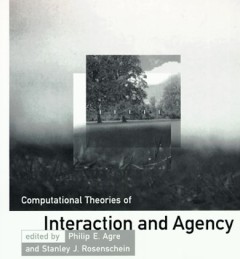Filter by

Heinrich Heines S?mtliche Werke
- Edition
- -
- ISBN/ISSN
- -
- Collation
- -
- Series Title
- 1
- Call Number
- -
- Edition
- -
- ISBN/ISSN
- -
- Collation
- -
- Series Title
- 1
- Call Number
- -

A Burglar's life; or, The stirring adventures of the great English burglar Ma…
- Edition
- -
- ISBN/ISSN
- -
- Collation
- xxi, 194 p,Authorship uncertain. Editors regard James Lester Burke as probable author,First publishe
- Series Title
- -
- Call Number
- SRLF_UCLA:LAGE-782059
- Edition
- -
- ISBN/ISSN
- -
- Collation
- xxi, 194 p,Authorship uncertain. Editors regard James Lester Burke as probable author,First publishe
- Series Title
- -
- Call Number
- SRLF_UCLA:LAGE-782059

From Embryology to Evo-Devo: A History of Developmental Evolution
Historians, philosophers, sociologists, and biologists explore the history of the idea that embryological development and evolution are linked.Although we now know that ontogeny (individual development) does not actually recapitulate phylogeny (evolutionary transformation), contrary to Ernst Haeckel's famous dictum, the relationship between embryological development and evolution remains the su…
- Edition
- -
- ISBN/ISSN
- 9780262277976
- Collation
- 1 online resource (vii, 569 pages) :illustrations.
- Series Title
- -
- Call Number
- -

Heredity produced : at the crossroads of biology, politics, and culture, 1500…
The cultural history of heredity: scholars from a range of disciplines discuss the evolution of the concept of heredity, from the Early Modern understanding of the act of "generation" to its later nineteenth-century definition as the transmission of characteristics across generations. Until the middle of the eighteenth century, the biological makeup of an organism was ascribed to an individu…
- Edition
- -
- ISBN/ISSN
- 9780262280334
- Collation
- 1 online resource (x, 496 pages, 2 pages of plates) : illustrations (some color).
- Series Title
- Transformations: Studies in the History of Science and Technology
- Call Number
- 580 HER

Causation, Prediction, and Search (Second Edition)
The authors address the assumptions and methods that allow us to turn observations into causal knowledge, and use even incomplete causal knowledge in planning and prediction to influence and control our environment.What assumptions and methods allow us to turn observations into causal knowledge, and how can even incomplete causal knowledge be used in planning and prediction to influence and con…
- Edition
- -
- ISBN/ISSN
- 9780262284158
- Collation
- 1 online resource (xx, 511 pages) :illustrations.
- Series Title
- -
- Call Number
- -

Cellular Automata Machines: A New Environment for Modeling
Recently, cellular automata machines with the size, speed, and flexibility for general experimentation at a moderate cost have become available to the scientific community. These machines provide a laboratory in which the ideas presented in this book can be tested and applied to the synthesis of a great variety of systems. Computer scientists and researchers interested in modeling and simulatio…
- Edition
- -
- ISBN/ISSN
- 9780262291019
- Collation
- 1 online resource (ix, 259 pages) :illustrations.
- Series Title
- -
- Call Number
- -

Object recognition in man, monkey, and machine
The contributors bring a wide range of methodologies to bear on the common problem of image-based object recognition. These interconnected essays on three-dimensional visual object recognition present cutting-edge research by some of the most creative neuroscientific, cognitive, and computational scientists in the field. Cassandra Moore and Patrick Cavanagh take a classic demonstration, t…
- Edition
- -
- ISBN/ISSN
- 9780262287609
- Collation
- 1 online resource (217 pages) :illustrations.
- Series Title
- -
- Call Number
- -

Computational Theories of Interaction and Agency
"Reprinted from Artificial intelligence, volume 72, numbers 1-2 (January 1995) and volume 73, numbers 1-2 (February 1995)"--Title page verso.Over time the field of artificial intelligence has developed an "agent perspective" expanding its focus from thought to action, from search spaces to physical environments, and from problem-solving to long-term activity. Originally published as a special d…
- Edition
- 1st MIT Press ed.
- ISBN/ISSN
- 9780262291040
- Collation
- 1 online resource (vi, 767 pages) :illustrations.
- Series Title
- -
- Call Number
- -

Dynamic faces: Insights from experiments and computation
The recognition of faces is a fundamental visual function with importance for social interaction and communication. This volume offers a state-of-the-art, interdisciplinary overview of recent work on dynamic faces from both biological and computational perspectives.OCLC-licensed vendor bibliographic record.
- Edition
- -
- ISBN/ISSN
- 9780262289313
- Collation
- 1 online resource (xiii, 283 pages): illustrations
- Series Title
- -
- Call Number
- -

A New Understanding of Mental Disorders: Computational Models for Dimensional…
A new computational and dimensional approach to understanding and classifying mental disorders: modeling key learning and decision-making mechanisms across different mental disorders.OCLC-licensed vendor bibliographic record.
- Edition
- -
- ISBN/ISSN
- 9780262342841
- Collation
- 1 online resource (viii, 214 pages) :illustrations
- Series Title
- -
- Call Number
- -
 Computer Science, Information & General Works
Computer Science, Information & General Works  Philosophy & Psychology
Philosophy & Psychology  Religion
Religion  Social Sciences
Social Sciences  Language
Language  Pure Science
Pure Science  Applied Sciences
Applied Sciences  Art & Recreation
Art & Recreation  Literature
Literature  History & Geography
History & Geography